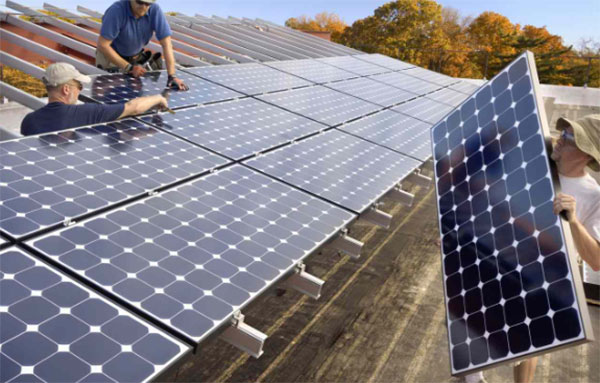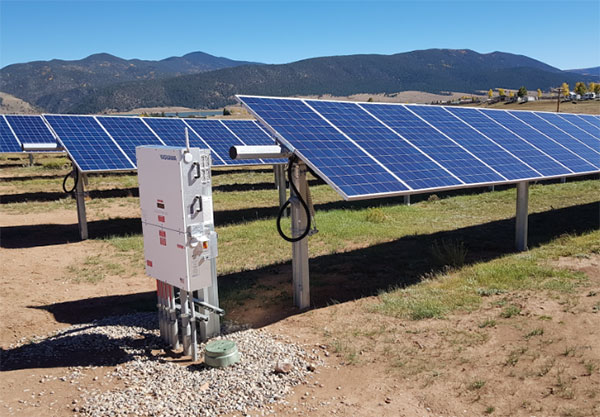Description
Solar photovoltaic cells are renewable as they convert sunlight, an inexhaustible resource, into electricity efficiently and sustainably.
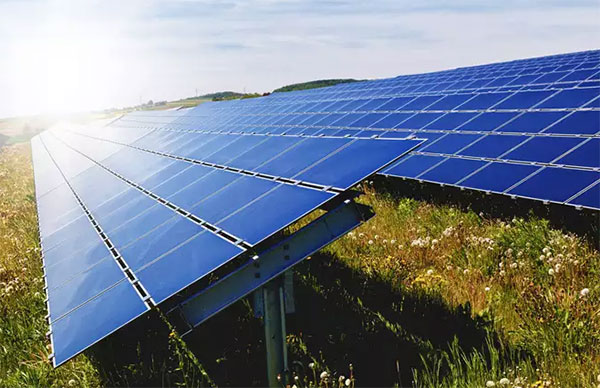
Definition and Overview of Solar Photovoltaic Cells
Solar photovoltaic cells, commonly known as solar cells, are devices that convert sunlight directly into electricity. They are a cornerstone technology in harnessing solar energy, one of the most abundant and sustainable energy sources on our planet. These cells use the photovoltaic effect, where light energy induces the generation of electrical voltage.
Basic Principles of Photovoltaic Technology
Photovoltaic technology operates on the principle that when light strikes a material, it can excite electrons, creating a flow of electrical current. Silicon, a semiconductor material, is predominantly used in these cells. The energy conversion efficiency of standard silicon-based solar cells typically ranges around 15-20%. Advances in technology have led to the development of multi-junction cells with efficiencies exceeding 40%. The cost of solar panels has significantly decreased over the years, making solar energy more accessible. For instance, the average cost of solar panels has dropped from around $76.67 per watt in 1977 to about $0.20 to $0.30 per watt as of 2023.
Historical Development of Solar Cells
The development of solar cells began in the 19th century, with the discovery of the photovoltaic effect in 1839 by Alexandre-Edmond Becquerel. However, the first practical solar cell wasn't developed until 1954 at Bell Labs. The original solar cells had an efficiency of only about 6%. Since then, the technology has evolved rapidly. The 1970s oil crisis prompted significant investment in solar technology, leading to efficiency and production improvements. By the early 21st century, solar cells had become a viable option for commercial and residential energy production, with widespread adoption and continued technological advancements.

Renewable Energy and Solar Photovoltaics
Renewable energy represents a key solution in the global effort to reduce carbon emissions and combat climate change. Unlike fossil fuels, renewable energy sources replenish naturally and have a minimal environmental footprint.
Characteristics of Renewable Energy Sources
- Sustainability: Renewable energy sources, such as wind, hydro, and solar, are constantly replenished and will not run out.
- Environmental Impact: They typically emit far fewer greenhouse gases than fossil fuels.
- Availability: Most forms of renewable energy are available worldwide, though their availability can vary based on geographic location and weather conditions.
- Cost Dynamics: The initial investment in renewable energy technologies can be high, but operational costs are often lower than traditional energy sources. For example, the average cost of wind power ranges from $30 to $60 per MWh, significantly lower than fossil fuel-based power.
Position of Solar Cells in Renewable Energy
Solar photovoltaic cells are at the forefront of renewable energy technologies due to their versatility and rapidly improving efficiency and cost-effectiveness.
- Global Adoption: Solar energy has seen exponential growth worldwide, with total installed photovoltaic capacity increasing from 1.4 GW in 2000 to over 627 GW by 2023.
- Efficiency: Modern solar cells have achieved efficiencies over 20%, with some high-end models exceeding 22%. This is a substantial improvement from the early models in the 1950s, which had efficiencies of about 6%.
- Cost Trends: The cost of solar photovoltaic technology has plummeted in the past decades. The average price per watt of solar panels has decreased from around $76.67 in 1977 to between $0.20 and $0.30 in 2023, making solar energy increasingly competitive with traditional energy sources.
- Advancements in Technology: Innovations such as bifacial solar panels and thin-film technologies are pushing the boundaries of solar cell efficiency and versatility.
- Limitations: Despite the advancements, solar power's reliance on sunlight means it's an intermittent energy source. Storage solutions like batteries, which have their own cost and efficiency considerations, are required for continuous power supply.
Environmental Impact of Solar Photovoltaic Cells
The environmental impact of solar photovoltaic cells is a critical aspect of their overall assessment, encompassing the entire life cycle from production to disposal.
Life Cycle Analysis of Solar Cells
- Raw Material Extraction: Involves mining for silicon and other materials, which has an environmental footprint.
- Manufacturing Process: Energy-intensive but has been becoming more efficient with technological advancements.
- Use Phase: Produces clean energy with no emissions, significantly reducing the carbon footprint over its operational life.
- End-of-Life Management: Recycling and disposal processes are essential to minimize environmental impact.
Comparison with Nonrenewable Energy Sources
| Aspect |
Solar Photovoltaic Cells |
Nonrenewable Energy Sources (e.g., Coal, Oil) |
| Primary Energy Source |
Sunlight, an inexhaustible resource. |
Fossil fuels, which are finite. |
| Emissions During Use |
None; clean energy production. |
High; releases greenhouse gases and pollutants. |
| Efficiency |
Ranges from 15-22%, with some models over 40%. |
Varies; typically around 33-45% for thermal power plants. |
| Cost Over Time |
High initial cost but low operational costs. Decreasing cost trend. |
Lower initial cost but higher operational and environmental costs. |
| Lifespan |
Around 25-30 years. |
Varies; power plants usually operate for 30-50 years. |
| Environmental Impact |
Low impact during use, but manufacturing and disposal have impacts. |
Significant impact due to extraction, operation, and emissions. |
| Energy Independence |
Promotes energy independence. |
Often reliant on geopolitically sensitive resources. |
| Scalability |
Highly scalable and adaptable. |
Scalability limited by resource availability and environmental concerns. |
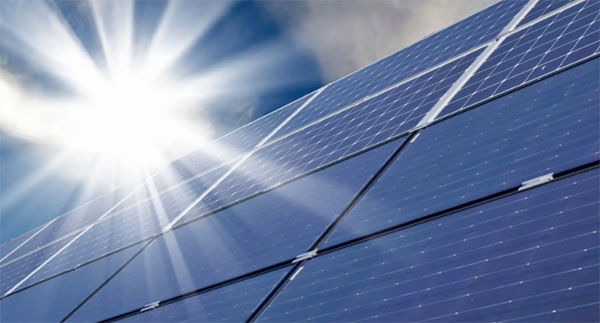
Manufacturing and Material Use in Solar Cells
The manufacturing process and material selection are crucial factors that determine the efficiency, cost, and environmental impact of solar cells.
Key Materials in Photovoltaic Cell Production
- Silicon: The most commonly used material in solar cells. High-purity silicon is required for optimal performance.
- Metals for Conductivity: Silver and aluminum are used for their excellent electrical conductivity and durability.
- Glass and Plastics: Used for protective layers and backing. They provide durability and weather resistance.
- Rare Earth Elements: Sometimes used in thin-film solar cells. These include cadmium telluride (CdTe) and copper indium gallium selenide (CIGS).
Environmental and Resource Considerations
- Resource Scarcity: Some materials, like high-purity silicon and rare earth elements, are limited and challenging to extract.
- Energy Intensive Manufacturing: Producing high-purity silicon requires significant energy, contributing to the carbon footprint.
- Recycling and Waste Management: End-of-life management of solar panels is crucial to minimize environmental impact. The recycling process for solar cells is still developing.
- Cost Factors: The cost of materials can significantly impact the overall cost of solar cells. For instance, the price of polysilicon, a key raw material, has fluctuated substantially, impacting the cost per watt of solar panels.
- Advancements in Material Science: Research is ongoing to find more abundant, less expensive, and more efficient materials for solar cell production.
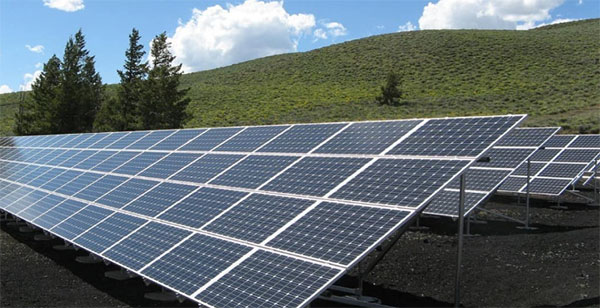
Efficiency and Technological Advancements in Solar Cells
Advancements in photovoltaic technology have significantly improved the efficiency and practicality of solar cells, playing a crucial role in the adoption of solar energy globally.
Recent Innovations in Photovoltaic Technology
- Perovskite Solar Cells: Emerging technology promising higher efficiency and lower manufacturing costs compared to traditional silicon cells.
- Bifacial Solar Panels: Capable of capturing sunlight from both sides, increasing total energy generation.
- Thin-Film Solar Cells: Offer flexibility and lighter weight, suitable for a variety of applications, including wearable technology.
- Multi-Junction Cells: Layers of different semiconductor materials capture different wavelengths of light, significantly boosting efficiency. Some models have achieved over 40% efficiency.
- Quantum Dots: Enhance the absorption spectrum, potentially increasing the efficiency of solar cells beyond the theoretical limit of silicon cells.
Challenges and Opportunities for Improvement
Cost Reduction: Continuous efforts are needed to reduce production costs to make solar technology more accessible.
Energy Storage: Integrating efficient and affordable energy storage solutions remains a challenge for managing the intermittent nature of solar energy.
Durability and Longevity: Extending the lifespan of solar panels and maintaining high efficiency over time is crucial for economic and environmental sustainability.
Scalability: Scaling up new technologies, like perovskite cells, to industrial levels while maintaining quality and reliability.
Recycling and End-of-Life Management: Developing effective recycling methods for solar panels is essential to minimize environmental impact.





